


Creating Beauty From Discards
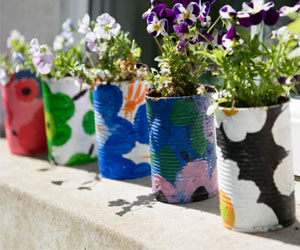
Repurposed materials, a sustainable and creative trend, have captured the imagination of individuals and artists alike. This eco-conscious practice involves taking items that are no longer in use or destined for the landfill and transforming them into something new, beautiful, and functional. In this article, we'll delve into the world of repurposed materials and explore the ingenuity and environmental impact behind this art.
The Essence Of Repurposed Materials
Repurposing, also known as upcycling, is all about giving discarded or unused materials a second chance. These materials can range from old furniture, salvaged wood, discarded fabrics, and even items like vintage suitcases, car parts, and wine crates. Rather than allowing these objects to end up in landfills, repurposing breathes new life into them through creative and often unexpected means.
Environmental Benefits
One of the most compelling aspects of repurposed materials is their positive environmental impact. By upcycling, we reduce the need for new resources, which saves energy and conserves raw materials. This practice significantly lessens the burden on landfills and cuts down on pollution generated during the production of new items.
Resourcefulness And Creativity
Repurposing materials encourages resourcefulness and sparks creativity. When working with limited resources, artists often find innovative solutions to turn discarded items into functional and beautiful pieces. This process can lead to fresh ideas and designs that stand out for their uniqueness.
Artistic Expression And Uniqueness
Repurposed materials are celebrated for their artistic expression and uniqueness. Each piece tells a story, preserving the history and character of the original materials. Whether it's a coffee table made from an old door or a lamp fashioned from discarded industrial equipment, these creations are one-of-a-kind.
A Sustainable Lifestyle
Repurposed materials fit perfectly within the framework of a sustainable lifestyle. By incorporating upcycled items into your home or daily life, you contribute to a more eco-friendly world. Not only do you reduce your carbon footprint, but you also promote the principles of recycling, reusing, and repurposing.
Inspiration And Community
Repurposed materials often inspire like-minded individuals who appreciate creativity and sustainability. There are communities and online platforms where enthusiasts share their projects, tips, and ideas. This sense of community fosters inspiration and provides valuable insights and support.
The Beauty Of Imperfection
In a world where mass production often prioritizes uniformity and perfection, repurposed materials celebrate imperfection. The wear and tear on materials, their age, and history become part of the charm. This makes each piece more personal, meaningful, and unique.
Repurposed materials represent more than just a creative endeavor. They embody a sustainable and eco-conscious way of life, allowing us to contribute positively to the environment while fostering our creativity. Whether you're a seasoned artisan or simply someone who appreciates unique and sustainable designs, incorporating repurposed materials into your life adds a touch of artistry and resourcefulness to your surroundings. It's a reminder that beauty can be found in the most unexpected places, and with a little creativity, we can all play a part in reducing waste and making the world a more eco-friendly place.


Igniting Creativity And Ambiance In Your Home
 The Essence Of Homemade Candle Art
The Essence Of Homemade Candle Art
Homemade candle art represents the perfect fusion of science and artistry. Crafting a candle from scratch involves understanding the science of wax and wick, but it also encourages artistic expression in choosing colors, shapes, and fragrances. Whether you're a seasoned artisan or a beginner, this craft has something to offer everyone.
Materials And Techniques
Creating homemade candles can be a fulfilling experience. The key materials include wax, fragrance oils, wicks, and coloring agents. The type of wax you choose, like soy, beeswax, or paraffin, affects the candle's texture and burn time. Fragrance oils infuse your candles with enticing scents, from soothing lavender to invigorating citrus. Candle coloring agents provide endless possibilities for personalization.
Homemade candle making involves several techniques, including melting the wax, adding fragrance and color, and pouring the mixture into molds. The cooling and setting process requires patience, as the wax transforms into a solid form, ready to be ignited.
Ambiance And Relaxation
Candles have always been synonymous with creating a warm and inviting atmosphere. The soft, flickering glow of homemade candles can transform any room into a cozy haven.
Healing Stitches For Mind And Soul
 Sense Of Accomplishment: Completing a cross-stitch project provides a tangible sense of accomplishment. Watching a piece of artwork slowly take shape, stitch by stitch, instills a feeling of pride and boosts self-esteem.
Sense Of Accomplishment: Completing a cross-stitch project provides a tangible sense of accomplishment. Watching a piece of artwork slowly take shape, stitch by stitch, instills a feeling of pride and boosts self-esteem.
Emotional Expression: Cross-stitching can be a form of emotional expression. By selecting colors, patterns, and designs, individuals can channel their emotions into their creations, helping them process and cope with challenging feelings.
Distraction From Negative Thoughts: The process of cross-stitching serves as a constructive and enjoyable distraction from negative or intrusive thoughts. It can help redirect mental energy away from worries and concerns.
Connection And Community: Many individuals find solace in the cross-stitching community. Sharing projects, tips, and experiences with others can provide a sense of belonging and support, reducing feelings of isolation.
A Time-Honored Craft
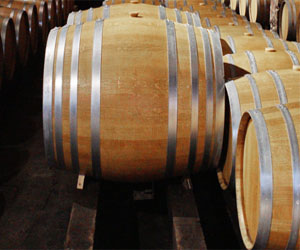 Once the grapes are collected, they are processed through various methods, including crushing, destemming, and pressing. The choice of these methods, like the choice of grape variety, varies from region to region, reflecting the traditions and techniques that have been perfected over time.
Once the grapes are collected, they are processed through various methods, including crushing, destemming, and pressing. The choice of these methods, like the choice of grape variety, varies from region to region, reflecting the traditions and techniques that have been perfected over time.
Fermentation And Aging: The fermentation stage is where the magic happens. Yeasts convert the grape sugars into alcohol, and this is a stage where winemaking traditions show their depth. Some wineries still rely on wild, naturally occurring yeasts for fermentation, while others use cultivated yeasts to ensure consistency. The decision can greatly influence the wine's character.
Aging is another crucial aspect of winemaking traditions. Many winemakers use oak barrels, which can impart flavors and aromas to the wine, adding complexity and depth. The length and type of aging are often guided by tradition. For example, in Bordeaux, it's common to age red wines in oak for extended periods, while in the New World, there's often a preference for a more fruit-forward style with shorter aging.
Blending And Bottling: Blending is an art that relies on the winemaker's palate, knowledge, and adherence to tradition. Winemakers may blend different grape varieties or vintages to achieve the desired flavor profile, and this is often influenced by regional practices and local customs.
Once the wine has reached the desired quality, it is bottled, sealed, and labeled, often with labels that pay homage to the winery's history and heritage.
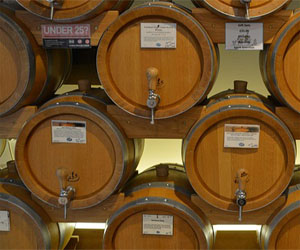
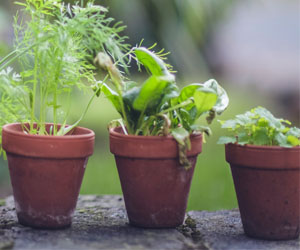

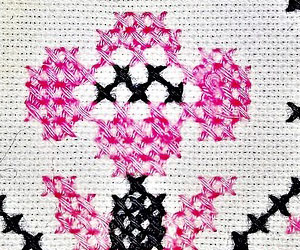

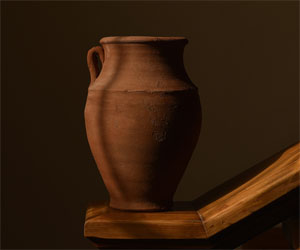
Herbs For Homemade Remedies
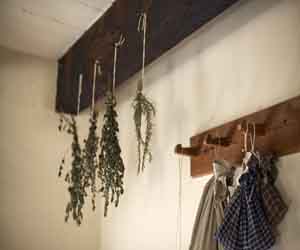 Creating Your Herbal Toolkit
Creating Your Herbal Toolkit
To get started with herbs for homemade remedies, it's essential to build a basic herbal toolkit. Here are some key herbs to consider:
1. Lavender: Known for its soothing properties, lavender can help alleviate stress, anxiety, and insomnia. It's often used in teas, essential oils, and as a topical treatment for burns and insect bites.
2. Echinacea: Echinacea is celebrated for its immune-boosting capabilities. It's commonly used to fend off or reduce the duration of colds and flu.
3. Aloe Vera: Aloe vera is renowned for its ability to heal skin ailments, from sunburn to minor cuts and wounds. Its gel is a go-to remedy for soothing and repairing damaged skin.
4. Chamomile: Chamomile is a gentle herb used to calm digestive issues and promote relaxation. It's often found in teas, but its essential oil can be used topically for various skin conditions.
5. Peppermint: Peppermint is a versatile herb known for aiding digestion and alleviating headaches. It can be used in teas, infused oils, or as a topical rub.
6. Calendula: Calendula is prized for its skin-healing properties and is a primary ingredient in salves, creams, and ointments for skin irritations and rashes.
7. Ginger: Ginger is a potent anti-nausea and anti-inflammatory herb. It's an excellent addition to teas or can be consumed in various forms for digestive relief.
8. Thyme: Thyme's antimicrobial and antibacterial properties make it a great remedy for respiratory issues. It's often used in homemade cough syrups and teas.
A Timeless Tapestry Of Tradition And Artistry
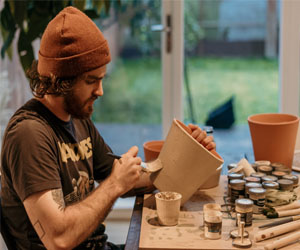 Cultural Significance: Pottery has held a profound cultural significance in the history of human civilization. In many ancient cultures, pottery was not just a craft; it was an art form deeply intertwined with rituals, spirituality, and daily life. From sacred vessels used in religious ceremonies to utilitarian items for food storage and preparation, pottery has played multifaceted roles in cultural practices.
Cultural Significance: Pottery has held a profound cultural significance in the history of human civilization. In many ancient cultures, pottery was not just a craft; it was an art form deeply intertwined with rituals, spirituality, and daily life. From sacred vessels used in religious ceremonies to utilitarian items for food storage and preparation, pottery has played multifaceted roles in cultural practices.
Global Diversity: What makes pottery culture so fascinating is its global diversity. Each culture has developed its own unique styles, techniques, and traditions in pottery. From the intricate porcelain of China and the terracotta of the ancient Greeks to the vibrant Talavera ceramics of Mexico and the earthy, rustic pottery of Native American tribes, the world of pottery is a testament to the ingenuity and creativity of humanity.
Cultural Identity: Pottery often reflects the identity and values of a culture. For example, Native American pottery features distinct geometric designs and motifs that are deeply rooted in their cultural heritage. Japanese ceramics embody the principle of wabi-sabi, celebrating imperfection and the beauty of transience. The intricate patterns of Moorish pottery found in Spain are a testament to their historical Islamic influences.
Traditional Techniques: Pottery culture involves a wide range of traditional techniques that have been passed down through generations. Techniques like coiling, handbuilding, and wheel-throwing are often specific to certain regions and time periods. The preservation of these techniques helps ensure that the art of pottery remains connected to its cultural roots.